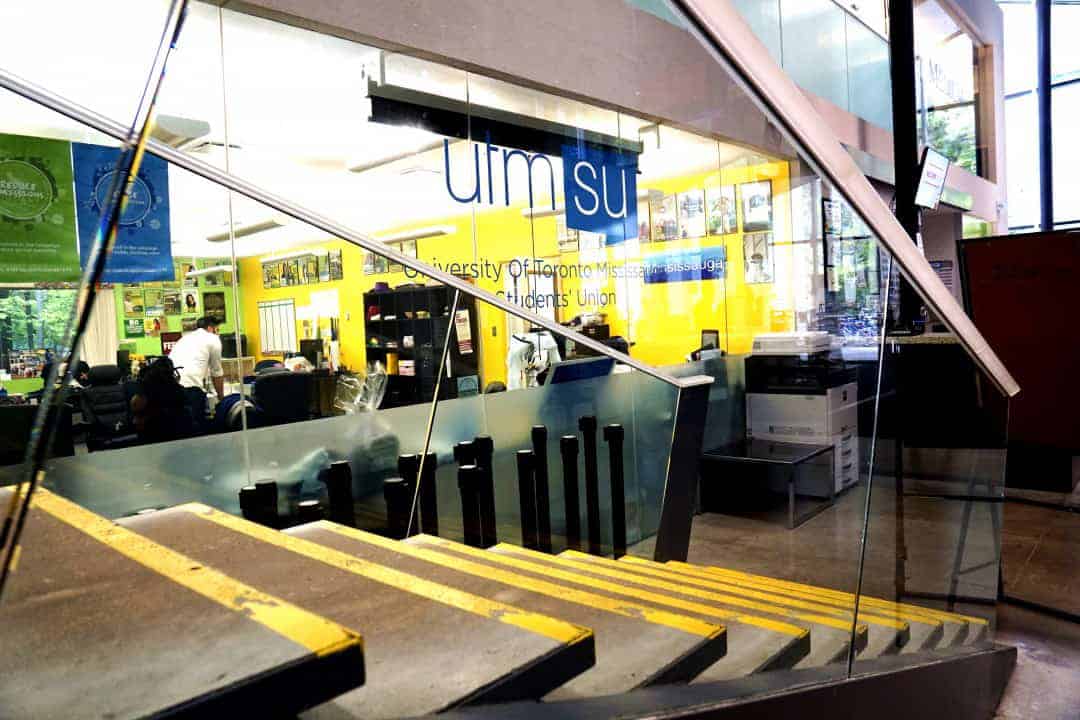On November 30, the University of Toronto Mississauga Students’ Union (UTMSU) held a virtual town hall as part of its Education For All campaign, which calls for support from the university and political representatives in order to overcome financial barriers and accessibility issues at postsecondary institutions.
The Zoom event was led by UTMSU President Mitra Yakubi, who moderated a question-and-answer session with panelists. The panel included Joanna Clark, Chairperson of the Canadian Federation of Students (CFS) Nova Scotia; Amy Conwell, Chair of the Canadian Union of Public Employees Unit 3902, the labour union representing contract academic workers at U of T; and Kayla Weiler, National Executive Representative of CFS-Ontario.
What does education for all mean to you, and why is it important?
Clark began by highlighting how the narrative has shifted with respect to education advocacy, so that it is not just focused solely on tuition fees, but has expanded to mean “having accessible, equitable… postsecondary education that anyone who wants to participate in is able to access.” She discussed how a postsecondary degree has become as necessary as a high school education. “You can’t really do anything [without] that postsecondary education,” she said.
Conwell spoke to the need to take an intersectional approach to assessing barriers that may impact a person’s ability to access or complete their education. “We know that a key issue in accessing education is mental health supports that are available on campus,” she said, emphasizing what she sees as a mental health issue at U of T. “With the conversations that are going on around U of T right now, focusing on mental health makes sense.”
Weiler proposed that education for all is achievable and said that education “should not be a commodity that you buy or sell,” but should “be accessible and free for everyone.”
She also mentioned the importance of having these conversations during the pandemic, highlighting the need for strong and properly-funded public services so that the education system “doesn’t allow for… students to survive and struggle through it, [but] actually helps them thrive and achieve their ultimate educational goals.”
Weiler also emphasized the need for students to be actively involved in decision-making processes in education. “What this also looks like at our institutions is having students on the board of governors, and not just one or two or three students, but actual boards of students making decisions,” she said, highlighting the lacking representation of students in certain decisions. U of T’s governing council has six undergraduate students and two graduate students on it for the 2020–2021 school year.
Can education really be accessible to all students, and if so, how can we achieve that accessible education?
Weiler claimed that a free education system would cost Canada $10 billion, referring to a 2016 calculation by the CFS which calculated the cost at over $10.2 billion. “It sounds like a lot of money,” she said. “But in the grand scheme of the government’s budget, it’s actually not that much money. We see that our government spends more than this amount of money on the military every year or on other systems that don’t fully benefit everybody.”
According to the Government of Canada, the Main Estimates of the Department of National Defence for 2019–2020 is $21.9 billion. “Canada does have the money; Ontario does have the money; it’s just about priority,” said Weiler.
Conwell answered that education currently is not accessible and that “with the current set of constraints, it can’t be.” She echoed Weiler’s point, saying that institutions do not prioritize education and argued that, instead, they prioritize risk management. “Decisions at U of T are overshadowed by the question of ‘how will the government react?’ ” said Conwell, noting the tendency she sees among university institutions to manage these risks.
Clark also pointed to the fact that education institutions were not created to support everyone and be accessible. “If we trace it all back, they weren’t made for even, let’s say, women,” she said.
According to University of Toronto Magazine, U of T accepted its first women students in 1884, after being founded in 1827. Clark also pointed to the example of universities with previous religious affiliations. “Universities were not created to be accessible, and that’s why we have so much work and so many different sectors to improve accessibility of education,” she said.
She further argued that postsecondary institutions should be public institutions that are funded by the public and held accountable to them. “When we are attending an institution, there should be accountability [for] those who are making decisions,” said Clark.
How can education be made more accessible virtually, and what are your thoughts on the postsecondary institution response to COVID-19?
Conwell discussed how the virtual university environment has involved students doing the same amount of work as they would in a regular university environment or, oftentimes, more work than before.
She brought up asynchronous classes, for example, which involve sessions that students can access on their own time, rather than in real time or as live sessions. “If you’re learning just [asynchronously], you’re basically just teaching yourself,” she said, and proposed that students should not be paying the same amount in tuition for this different mode of delivery.
Clark also discussed access to the internet as a barrier, proposing the question of whether students who have internet access can also afford its cost. “We know right now that students are struggling financially… if they can’t [afford internet], what is their option?”
Editor’s note (December 8): This article has been updated to reflect that Amy Conwell is the chair of CUPE 3902.


